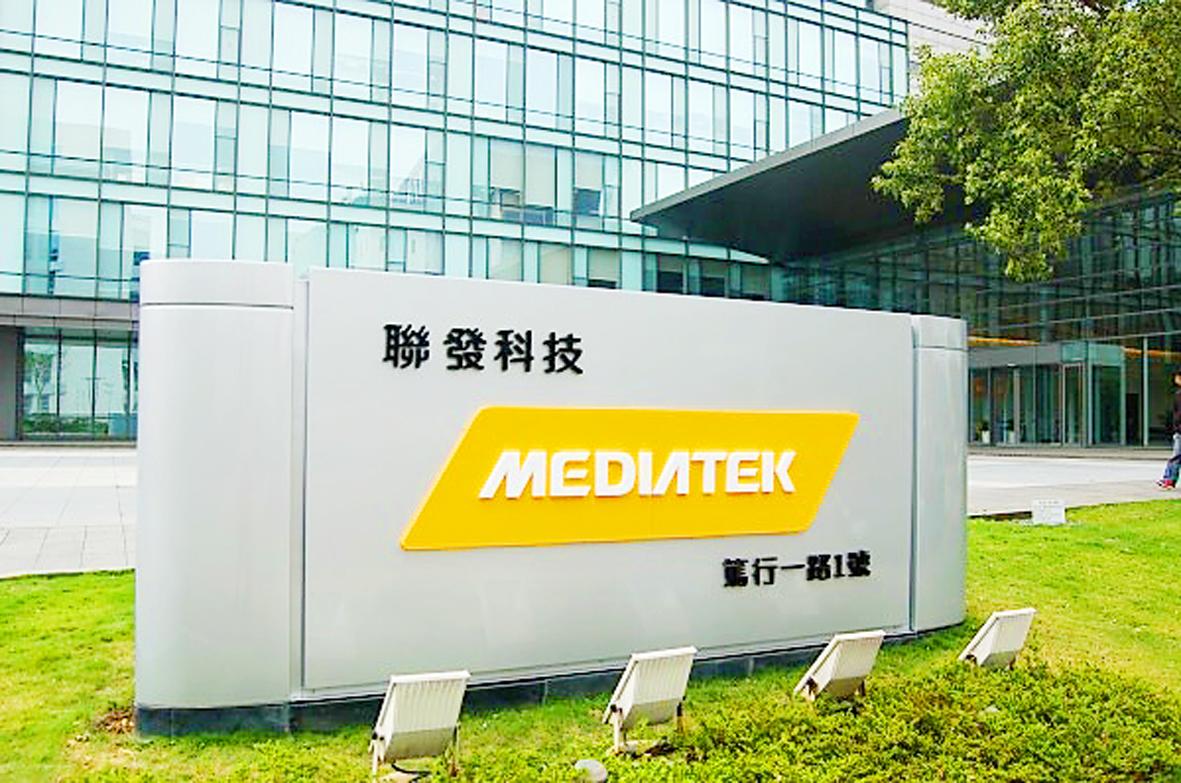The data transmission speed of 6G (sixth-generation wireless) networks is expected to be 10 to 100 times faster than 5G technology, MediaTek Inc (聯發科) said in a paper released on Jan. 18.
6G standardization is expected to begin in 2024 or 2025, with the first standard technology expected in 2027 or 2028, said MediaTek, one of the world’s leading chip design companies.
“Our 6G vision is of an adaptive, integrated and super heterogeneous wireless communication system, delivering pervasive mobile connectivity in a truly ubiquitous manner,” the paper said.

Photo: Grace Hung, Taipei Times
The sector is making breakthroughs in the research and development (R&D) of key 6G technologies, said Fan Ming-xi (范明熙), deputy general manager of MediaTek’s communication system design department.
MediaTek is bolstering its 6G R&D and is working with top-end researchers in academia and industry to explore innovative technology trends, Fan said.
In addition to several new technologies, such as ultra-wideband receiver and transmitter technology, the convergence of terrestrial and non-terrestrial networks, artificial intelligence, and machine learning for networking and communications could lead to more innovative and emerging technologies being introduced over the next few years, Fan added.
The standardization and rollout of 6G technology would follow the timeline set out in the International Telecommunication Union Radiocommunication Sector’s International Mobile Telecommunications vision for 2030 and beyond, MediaTek said.
The company expects initial standardization efforts to start next year or in 2024.
It said it would continue to develop 5G technology to help push the standardization and commercialization of 6G systems.
MediaTek also outlined new “killer applications” for 6G technology, saying these would drive the need for higher performance, such as extreme holographic and tactile communications, digital twins and advanced telepresence.
MediaTek said that 6G technology could cause data transmission speeds to rise by a factor of 10 to 100, with guaranteed low latency relative to 5G, and provide additional spectrum availability in the 7 to 24 gigahertz and sub-terahertz frequencies, with total addressable bandwidth of 50 gigahertz.
The new spectrum opens up significant opportunities to deliver “extreme applications,” but also creates significant challenges, such as overcoming poor propagation at higher frequencies, the paper said.

Intel Corp chief executive officer Lip-Bu Tan (陳立武) is expected to meet with Taiwanese suppliers next month in conjunction with the opening of the Computex Taipei trade show, supply chain sources said on Monday. The visit, the first for Tan to Taiwan since assuming his new post last month, would be aimed at enhancing Intel’s ties with suppliers in Taiwan as he attempts to help turn around the struggling US chipmaker, the sources said. Tan is to hold a banquet to celebrate Intel’s 40-year presence in Taiwan before Computex opens on May 20 and invite dozens of Taiwanese suppliers to exchange views

Application-specific integrated circuit designer Faraday Technology Corp (智原) yesterday said that although revenue this quarter would decline 30 percent from last quarter, it retained its full-year forecast of revenue growth of 100 percent. The company attributed the quarterly drop to a slowdown in customers’ production of chips using Faraday’s advanced packaging technology. The company is still confident about its revenue growth this year, given its strong “design-win” — or the projects it won to help customers design their chips, Faraday president Steve Wang (王國雍) told an online earnings conference. “The design-win this year is better than we expected. We believe we will win

Chizuko Kimura has become the first female sushi chef in the world to win a Michelin star, fulfilling a promise she made to her dying husband to continue his legacy. The 54-year-old Japanese chef regained the Michelin star her late husband, Shunei Kimura, won three years ago for their Sushi Shunei restaurant in Paris. For Shunei Kimura, the star was a dream come true. However, the joy was short-lived. He died from cancer just three months later in June 2022. He was 65. The following year, the restaurant in the heart of Montmartre lost its star rating. Chizuko Kimura insisted that the new star is still down

While China’s leaders use their economic and political might to fight US President Donald Trump’s trade war “to the end,” its army of social media soldiers are embarking on a more humorous campaign online. Trump’s tariff blitz has seen Washington and Beijing impose eye-watering duties on imports from the other, fanning a standoff between the economic superpowers that has sparked global recession fears and sent markets into a tailspin. Trump says his policy is a response to years of being “ripped off” by other countries and aims to bring manufacturing to the US, forcing companies to employ US workers. However, China’s online warriors